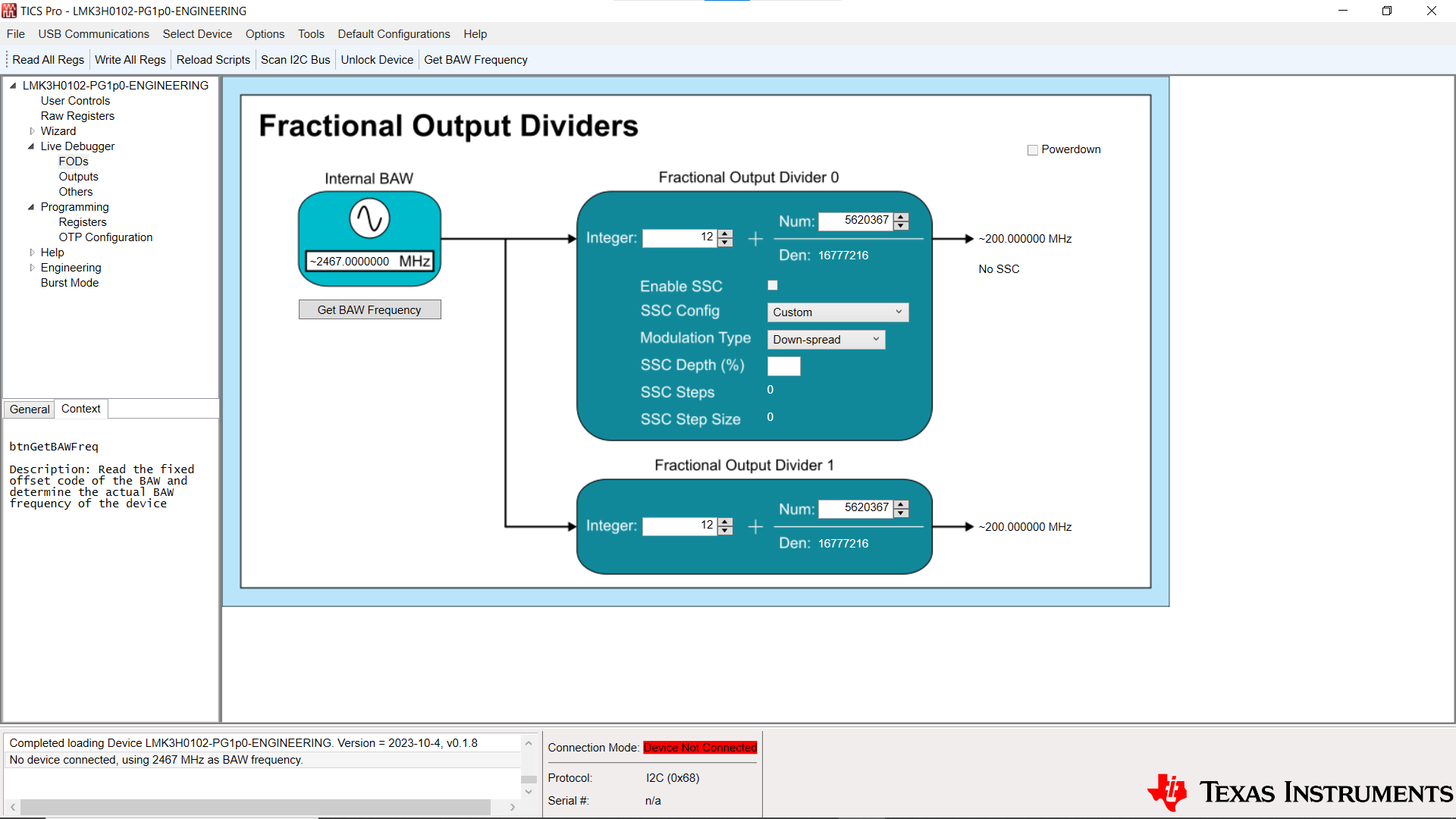SNAU287 November 2023
- 1
- Description
- Features
- 4
- 1Evaluation Module Overview
- 2Hardware
- 3Software
- 4Hardware Design Files
- 5Additional Information
- 6Related Documentation
3.1.2.1 FODs
 Figure 3-9 LMK3H0102 FODs Page
Figure 3-9 LMK3H0102 FODs PageThe FODs page allows for manipulation of the FODs of the device. Before modifying the FOD settings, read the BAW frequency from the device by clicking the Get BAW Frequency button. This populates the field with the approximate BAW frequency of the connected device, and keeps the value internally for frequency calculation. If there is not a device connected, then the nominal frequency of 2467 MHz is used for all GUI frequency calculations, including the wizard. As the BAW frequency changes from device to device, reading the frequency before continuing with the GUI usage is imperative. If the device registers are read at startup of the profile, or if the Read All Regs button in the toolbar is pressed, then the BAW frequency is read from the device and updated in the GUI.
Before modifying any settings on this page, click the Powerdown check box, change the settings, then click the Powerdown checkbox again. Both FODs consist of an integer and fractional divider. The output of the fractional divider is given by the frequency of the BAW divided by the total divide value of the FOD. FOD0 exclusively has the option for SSC on the output, meaning that any outputs requiring SSC must be sourced from FOD0. The down-spread SSC settings are configured before and can be selected. If a different depth or center-spread are required, then the GUI automatically calculates the SSC_STEPS and SSC_STEP_SIZE fields based on the desired depth and modulation type.